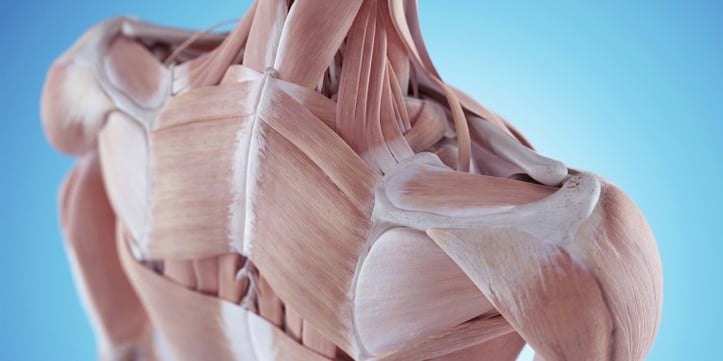Muscular Hypertrophy Explained: Science & 5 Best Training Practices for Growth

What Is Muscular Hypertrophy, and Why Does It Matter?
Muscular hypertrophy—the process of muscle growth—isn't just about lifting heavy weights. It's the biological adaptation where muscle fibers increase in size (and sometimes number) in response to stress. According to the American College of Sports Medicine (ACSM), this occurs through two primary mechanisms: myofibrillar hypertrophy (thickening of contractile proteins like actin/myosin) and sarcoplasmic hypertrophy (expansion of energy-storing fluid and glycogen in muscle cells).
For beginners, this means: Yes, your biceps can get bigger—but only if you train strategically.
The Science of Muscle Growth: 3 Key Drivers
To trigger hypertrophy, your workouts must target three proven pathways (NIH, 2021):
- Mechanical Tension: The force placed on muscle fibers during lifting. Studies show that lifting 60-80% of your 1RM (one-rep max) creates optimal tension for growth.
- Metabolic Stress: The "burn" from accumulated lactic acid and cellular swelling. This signals the body to repair and grow muscle.
- Muscle Damage: Micro-tears in fibers from eccentric (lengthening) contractions. Your body repairs these tears, making muscles stronger and larger.
Pro Tip: Focus on all three—not just heavy lifting. A set of 12 reps at 70% 1RM with a 3-second eccentric phase hits all three drivers.
5 Best Training Practices for Hypertrophy (Backed by Experts)
1. Prioritize Progressive Overload
The #1 rule: Gradually increase stress. NASM recommends tracking weekly changes—add 2.5-5 lbs to lifts, or complete 1-2 extra reps per set. Example: If you bench 135 lbs for 8 reps, aim for 135x10 next week, then 140x8.
2. Optimize Training Volume
Volume = sets × reps × weight. Research in Journal of Strength & Conditioning Research found 10-20 sets per muscle group weekly (split over 2-3 sessions) maximizes growth. For beginners: Start with 6-8 sets per muscle; intermediates: 12-15 sets.
3. Control Rest Intervals
Shorter rest (60-90 seconds) boosts metabolic stress; longer rest (2-3 minutes) preserves strength. For hypertrophy, NASM suggests 60-120 seconds between sets—enough to recover but not too much to lose the "pump."
4. Mix Compound & Isolation Moves
Compound lifts (squats, deadlifts, bench press) hit multiple muscles and drive mechanical tension. Pair them with isolation moves (bicep curls, leg extensions) to target lagging muscles. Try: 70% compound, 30% isolation in your routine.
5. Don’t Neglect Eccentric Training
Eccentrics (the "lowering" phase) cause the most muscle damage. Slow down: Lower weights over 3-4 seconds. A 2020 study in European Journal of Applied Physiology showed 4-second eccentrics increased hypertrophy by 18% vs. 1-second.
Common Myths to Avoid
- Myth: "You must train to failure every set." Truth: Training to near-failure (1-2 reps short) reduces injury risk and overtraining while still triggering growth (ACSM, 2022).
- Myth: "Cardio kills gains." Moderate cardio (30 mins, 3x/week) improves recovery without hindering hypertrophy—just avoid excessive HIIT pre-lift.
Take Action: Start Today
Grab a notebook and log your next workout. Track weight, reps, and how each set felt (burn, tension). In 4 weeks, adjust volume or weight based on progress. Remember: Hypertrophy is a marathon, not a sprint—consistency beats intensity.
Ready to grow? Your next PR (personal record) starts with the first rep.

Fit vs Fat: Decoding Health's True Ruler

Pump Up Your Heart: Science-Driven Weight Loss

Wellness Technology: Your Path to Sustainable Weight Loss

A Sensible Guide to Dietary New Year's Resolutions

Prevent Shoulder and Rotator Cuff Injuries with Corrective Exercises

Overcome Fitness Plateaus: 4 Tips for Success

10 x 10 Thanksgiving Day Circuit: A Fitness Guide

Unleash Your Fitness Potential with Kit Rich's Training Secrets

The Future of Fitness: A Guide for Beginners to Intermediates

